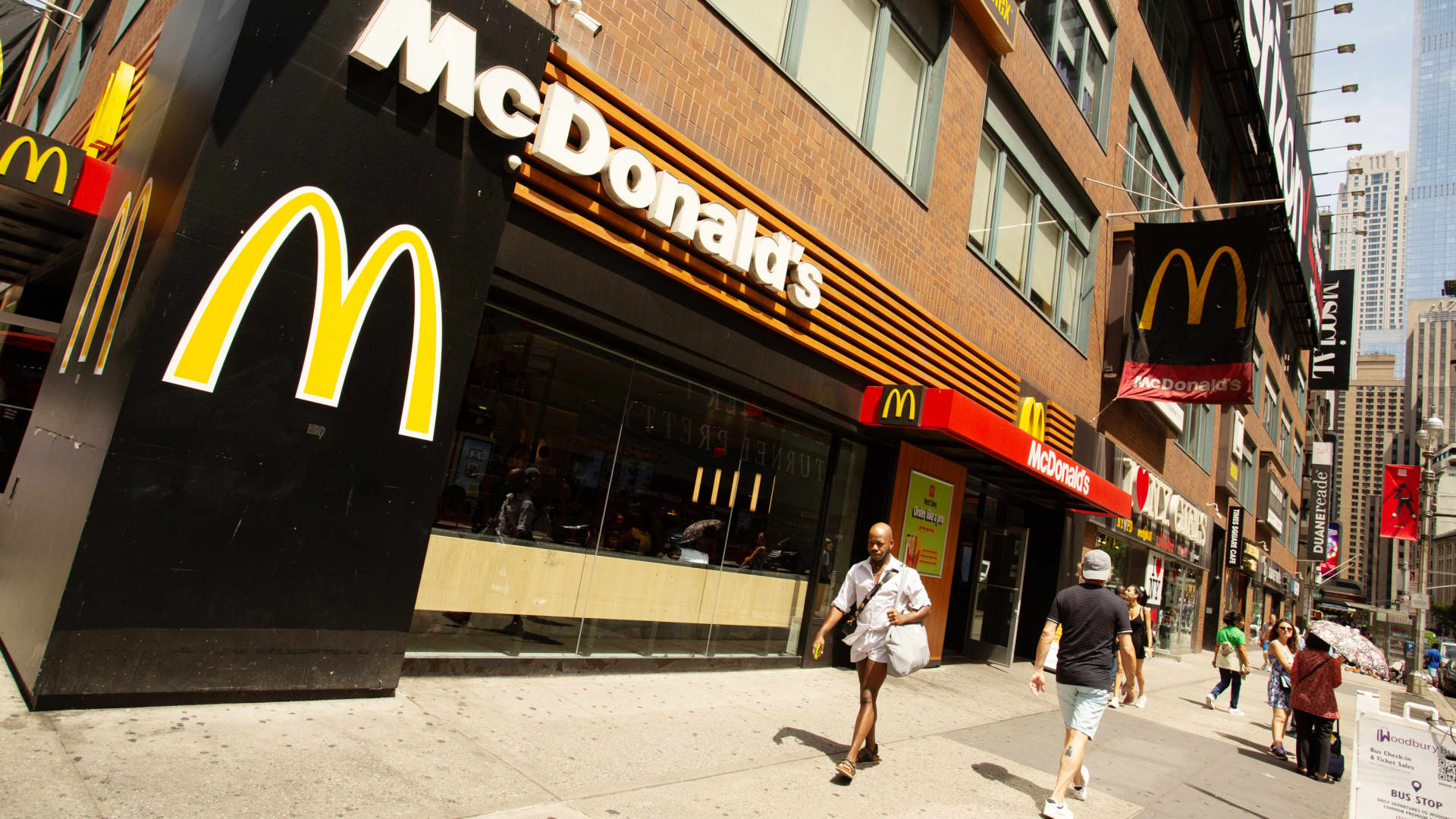US Markets
Thursday, June 2nd, 2022 12:45 pm EDT

The pace of job growth is expected to have slowed in May, but economists say the labor market remains strong, even as parts of the economy have weakened.
Economists forecast that employers added 328,000 new jobs, less than the 428,000 added in April, according to Dow Jones. The unemployment rate is forecast to decline to 3.5% from 3.6%.
Average hourly wages are expected to have risen by 0.4%, up from April’s 0.3% increase. Year-over-year, wage growth is expected to fall slightly to 5.2%, from 5.4% in April.
“I suspect it’s the average hourly earnings number that could get people excited,” said Michael Schumacher, head of macro strategy at Wells Fargo. “The Fed has been pretty consistent as well – that it’s inflation, inflation, inflation. If it’s 0.5%, you probably get some reaction. If it’s 0.6%, it’s pronounced.”
Schumacher said a hotter wage number could spark selling in both stocks and bonds, while the market may not react as much if the payrolls number misses the forecast. When bonds sell off, yields go higher.
The payroll data is being closely watched for any cracks in the labor market, as the Federal Reserve raises interest rates. But economists say there are no signs of weakness yet, and it is a part of the economy that is expected to remain strong for now.
“The thing about the labor market data is we already have more real-time data that gives us a better indicator,” said Tom Simons, money market economist at Jefferies. He noted that weekly jobless claims fell unexpectedly to a low 200,000 last week.
“We hear these anecdotal reports about X firm cutting Y thousands of jobs. It’s either that it isn’t really happening yet…or people are being let go and immediately finding another job,” he said.
Monthly job growth has been well above 400,000 for the past year, and economists say just based on the short supply of workers, it will naturally slow down.
Barclays U.S. economist Pooja Sriram said she expects a solid 375,000 payrolls were added in May.
“We think the momentum is definitely going to be slowing from here on. That’s just the nature of the labor market,” she said. “We do expect the participation rate to gradually pick up. We saw the number fall by 0.2 in April, but I think there will be some retracement of that. We expect a 0.1 improvement.”
The participation rate is closely watched by economists and shows how many people who are able to work have jobs or are looking for jobs. The rate was 62.2% in April.
May’s payroll data is expected to still show the impact of returning workers, who may have had Covid-related issues preventing them from working. “There’s a certain cohort of people that want to come back to the labor market because Covid restrictions have eased, and because inflation has picked up,” said Sriram.
The labor market was still short 1.2 million workers in April from pre-pandemic levels, but economists note that many people have retired from the workforce.
“We probably are settling into a lower trajectory for job growth. The participation rate has recovered all of the dip we saw in the spring of 2020, related to Covid,” said Simons. “I don’t think there’s a swath of people that is out of the labor force and on the cusp of being brought back in. There’s roughly two job openings for every unemployed person.”
Simons said he doesn’t buy the narrative in markets that the economy is going to slow down, causing the Fed to pause its aggressive interest rates hikes. The central bank raised rates by a half percentage point last month and is expected to raise rates by the same amount later in June and again in July.
“I find there’s a lot of people saying the economy is weakening very broadly, but really I think when people are saying that, they’re just thinking about the housing data. There’s no way I can argue the housing data is not bad.”
Higher mortgage rates combined with rising home prices have had a quick, chilling effect on the real estate market. Existing home sales in April were down 2.4% from March, at the slowest pace since the pandemic started.
“The market is also adjusting to a huge increase in the cost of financing home purchases over the past few months, and it’s natural we’ll get a slowdown,” Simons said. “The Fed wants that. I don’t think we’re seeing a big collapse in housing.” He noted that ISM manufacturing data continues to show a robust economy.
“Consumer spending is still strong and that’s going to be supported by a strong labor market and wages,” he said.
However, Diane Swonk, chief economist at Grant Thornton, said the housing market could be a “canary in the coal mine” for the economy.
She expects that the job market could ultimately be hurt by Fed tightening as well. She expects 375,000 new jobs were added to payrolls in May, but during the summer and into the fall, job growth could decline. She said it could fall back to a more normal pace in line with the average 186,000 payrolls per month added in the decade before the pandemic.
“We could see some declines,” she said. Fed officials “are starting to frame out what a softish landing is, and it’s unemployment higher than the current rate. It’s hard to get there without some declines in jobs at some point in time.”
This post has been syndicated from a third-party source. View the original article here.




